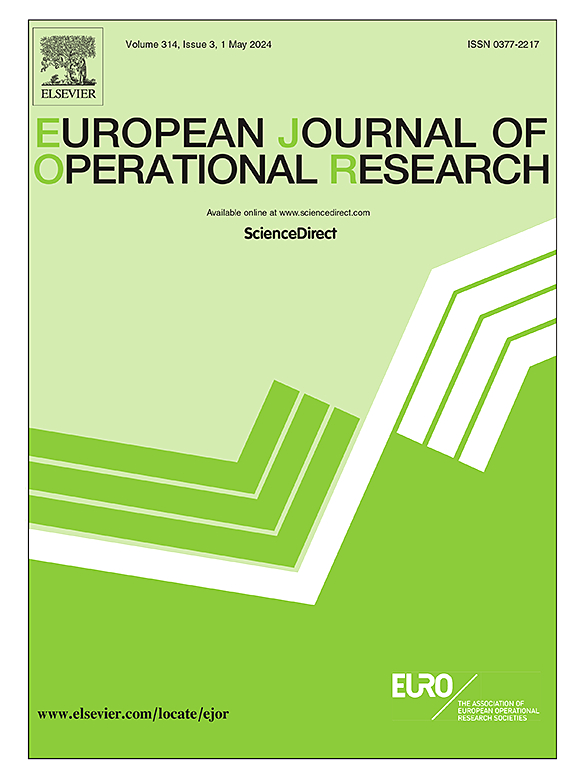在新产品发布期间对原产品进行战略性库存
IF 6
2区 管理学
Q1 OPERATIONS RESEARCH & MANAGEMENT SCIENCE
引用次数: 0
摘要
一些供应商采用单一的滚动策略,定期推出新的或更新的产品,同时逐步淘汰原有的版本;然而,他们的零售商可能会在新产品推出后战略性地销售停产的旧产品。本文论证了双边垄断框架下产品创新与战略库存之间的相互作用。我们为一个供应商建模,该供应商在两个周期内依次向零售商销售两个产品版本(原始版本和更新版本)。供应商决定更新产品的创新水平,零售商可以携带周期1到周期2独家供应的原产品。研究发现,库存持有成本的增加降低了零售商对原始产品的库存激励,可能会对更新产品的创新产生负面影响,但对供应链成员有利。此外,由于供应商的创新能力,当库存持有成本较高时,零售商的战略库存导致了罕见的供应商和零售商双输的情况,这与战略库存文献的结果相背离。我们的研究表明,政策制定者应该使用适当的库存税和补贴来维持适度的库存持有成本,以促进创新。此外,供应商应通过定制仓储和补贴合同对零售商库存成本进行战略性管理,以实现利润最大化。最后,为了避免战略库存造成的双输情况,供应链成员应考虑安排事先承诺不持有库存或使用供应商管理库存(VMI)。本文章由计算机程序翻译,如有差异,请以英文原文为准。
Strategic inventory of original products amid new product launches
Some suppliers adopt a single rollover strategy to periodically introduce new or updated products while phasing out the original versions; however, their retailers may strategically carry the discontinued old products after the launch of the new product. This paper demonstrates the interaction between product innovation and strategic inventory in a bilateral monopoly framework. We model a supplier that sequentially sells two product versions (original and updated) to a retailer in two periods. The supplier determines the innovation level of updated products, and the retailer may carry original products which are exclusively supplied in period 1 to period 2. We find that increased inventory holding costs, which reduce the retailer's incentive to stock the original product, may negatively impact innovation for the updated product but benefit the supply chain members. In addition, due to the supplier’s ability to innovate, the retailer's strategic inventory leads to an uncommon lose-lose situation for both the supplier and the retailer when the inventory holding cost is high, a result which deviates from the strategic inventory literature. Our research suggests that policymakers should use appropriate inventory taxes and subsidies to maintain moderate inventory holding costs in order to foster innovation. Moreover, suppliers should strategically manage retailer inventory costs through customized storage and subsidy contracts to maximize profitability. Lastly, to avoid the lose-lose scenario caused by strategic inventory, supply chain members should consider arranging prior commitments to not hold inventory or employ the use of Vendor Managed Inventory (VMI).
求助全文
通过发布文献求助,成功后即可免费获取论文全文。
去求助
来源期刊

European Journal of Operational Research
管理科学-运筹学与管理科学
CiteScore
11.90
自引率
9.40%
发文量
786
审稿时长
8.2 months
期刊介绍:
The European Journal of Operational Research (EJOR) publishes high quality, original papers that contribute to the methodology of operational research (OR) and to the practice of decision making.
 求助内容:
求助内容: 应助结果提醒方式:
应助结果提醒方式:


